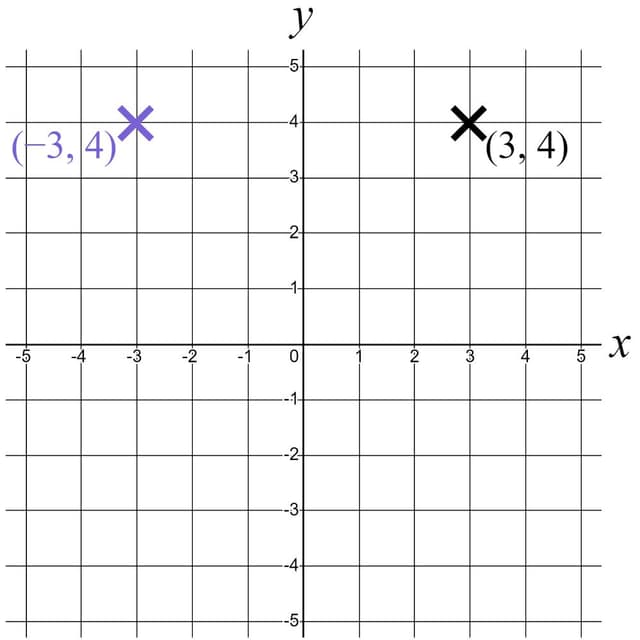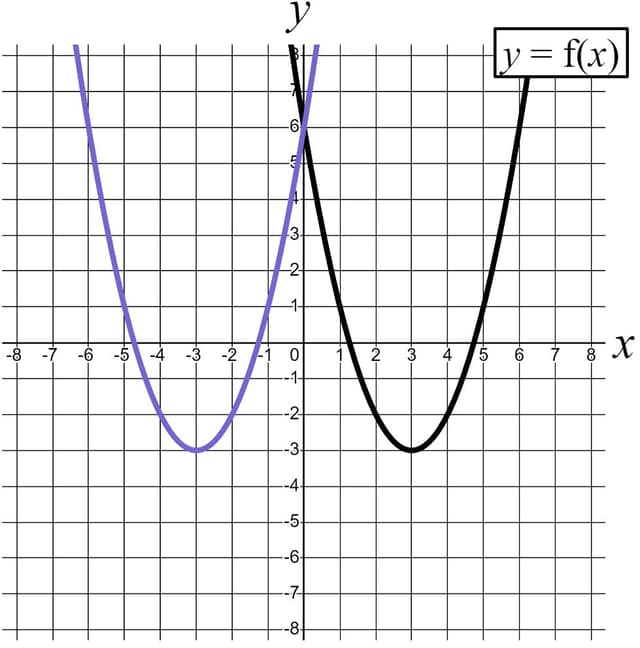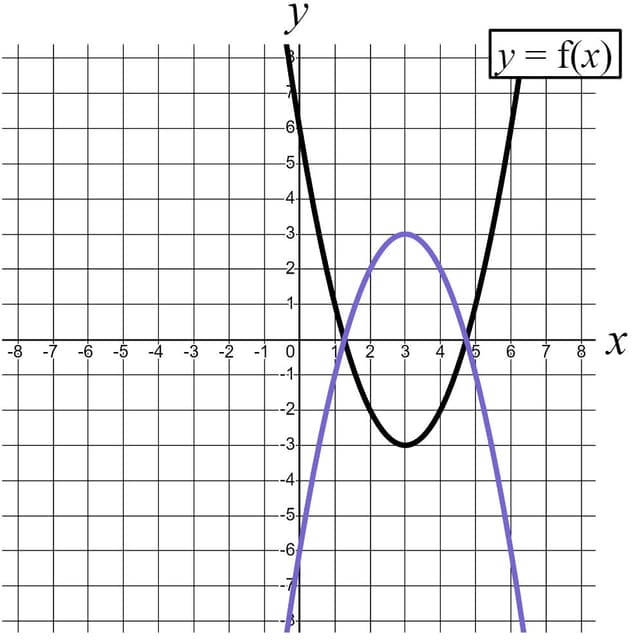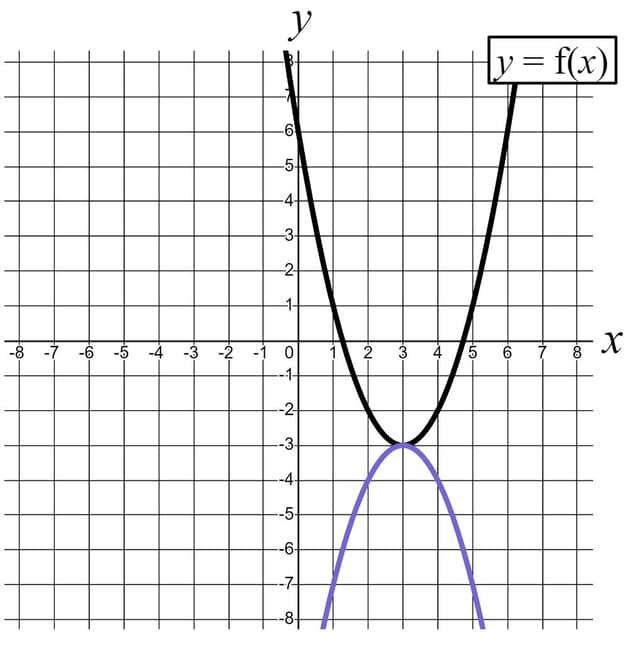Myths about teaching can hold you back


- Year 11•
- Higher
Transforming graphs: y = −f(x)
I can recognise the effect of applying the transformation y = −f(x) to a graph.


- Year 11•
- Higher
Transforming graphs: y = −f(x)
I can recognise the effect of applying the transformation y = −f(x) to a graph.
These resources will be removed by end of Summer Term 2025.
Switch to our new teaching resources now - designed by teachers and leading subject experts, and tested in classrooms.
These resources were created for remote use during the pandemic and are not designed for classroom teaching.
Lesson details
Key learning points
- Desmos is an effective tool for showing the effects of this transformation
- The actual function itself does not need to be known
- The graph is transformed by a reflection in the x axis
Keywords
Transformation - A transformation is a process that may change the size, orientation or position of a shape or graph.
Common misconception
Pupils can get confused between $$-$$f$$(x)$$ and f$$(-x)$$, which one is a reflection in the $$x$$-axis and which is a reflection in the $$y$$-axis?
Interpreting the notation is key. Remind pupils that $$-$$f$$(x)$$ is the output of f$$(x)$$ being multiplied by $$-1$$. Which coordinate is the output? The $$y$$ coordinates are altered from positive to negative, that is a reflection in which axis?
To help you plan your year 11 maths lesson on: Transforming graphs: y = −f(x), download all teaching resources for free and adapt to suit your pupils' needs...
To help you plan your year 11 maths lesson on: Transforming graphs: y = −f(x), download all teaching resources for free and adapt to suit your pupils' needs.
The starter quiz will activate and check your pupils' prior knowledge, with versions available both with and without answers in PDF format.
We use learning cycles to break down learning into key concepts or ideas linked to the learning outcome. Each learning cycle features explanations with checks for understanding and practice tasks with feedback. All of this is found in our slide decks, ready for you to download and edit. The practice tasks are also available as printable worksheets and some lessons have additional materials with extra material you might need for teaching the lesson.
The assessment exit quiz will test your pupils' understanding of the key learning points.
Our video is a tool for planning, showing how other teachers might teach the lesson, offering helpful tips, modelled explanations and inspiration for your own delivery in the classroom. Plus, you can set it as homework or revision for pupils and keep their learning on track by sharing an online pupil version of this lesson.
Explore more key stage 4 maths lessons from the Transformations of graphs unit, dive into the full secondary maths curriculum, or learn more about lesson planning.

Licence
Prior knowledge starter quiz
6 Questions
Q1.$$\text{f}(x)+a$$ and $$\text{f}(x+a)$$ transform the graph of $$\text{f}(x)$$ by __________.
Q2.Match each piece of function notation to a description.
$$\text{f}(x)+5$$ -
The output of $$\text{f}(x)$$ has $$5$$ added to it.
$$\text{f}(x+5)$$ -
The input has $$5$$ added to it before the function is applied.
$$5\text{f}(x)$$ -
The output of $$\text{f}(x)$$ is multiplied by $$5$$
$$\text{f}(x)-5$$ -
The output of $$\text{f}(x)$$ has $$5$$ subtracted from it.
$$\text{f}(x-5)$$ -
The input has $$5$$ subtracted before the function is applied.
Q3.The transformation of the point $$(3,4)$$ to the position $$(-3,4)$$ could be described by __________.

Q4.The transformation of the point $$(-2,5)$$ to the position $$(-2,-5)$$ could be described by __________.

Q5.The point $$(7,-9)$$ is reflected in the $$x$$-axis. What is its new position?
Q6.The point $$(-a,b)$$ is reflected in the $$x$$-axis. What is its new position?
Assessment exit quiz
6 Questions
Q1.$$-\text{f}(x)$$ is a transformation by __________.
Q2.$$-\text{f}(x)$$ is a transformation by reflection __________.
Q3.$$y=\text{f}(x)$$ is graphed here. Which coordinate pairs will be on the transformed graph $$y=-\text{f}(x)$$?

Q4.$$y=\text{f}(x)$$ is graphed. Which of these images shows the transformation $$y=-\text{f}(x)$$?



Q5.Here is a table of values for an unknown function $$\text{f}(x)$$ Which coordinate pairs will be on the transformed graph $$y=-\text{f}(x)$$?


